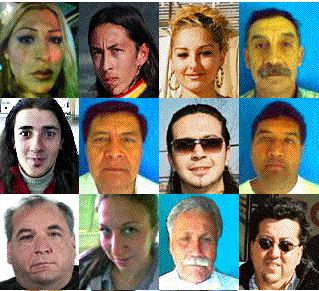Aquest vídeo-artista català, és un dels primers a aprofitar tant els nous recursos que ofereix la tecnologia digital, com l'estirada mediàtica que proporciona. La seva primera aportació és Sísif, que es presenta en 1995, simultàniament en el Museu d'Art Contemporani de Barcelona (Macba) i en el Museu de Wellington a Nova Zelanda, situat en les antípodes. A la pàgina dividida en dues parts, dos homes completament nus tiren de la mateixa corda, unificant metafòricament el món a través de la web. Els dos projectes següents, que s'inscriuen en una línia minimal-conceptual, redueixen als mínims termes l'ús de les eines específiques del mitjà. Abad és un artista multidisciplinari que ha arribat a Internet després de les seves incursions en el camp del vídeo i de les instal·lacions.
Al febrer del 99, la seva obra 1.000.000, presentada a Arco, guanya el Premi Arco Electrònic i és adquirida per la Fundació Sanitas, convertint-se en la primera obra de net.art venuda a Espanya. Al setembre del mateix any, Z és un dels tres projectes espanyols produïts pel Mecad de Sabadell (Barcelona) per participar en la mega exposició Net_Condition en el ZKM de Karlsruhe a Alemanya.
Llicenciat en Història de l'Art de la Universitat de Barcelona, els seus projectes han estat exposats en el Museu d'Art Contemporani de Barcelona, 2003; PS1., Long Island City, Nova York, 2003; Hamburger Bahnof, Berlín, 2002; Media Lounge/New Museum of Contemporary Art, Nova York, 2001; artista convidat en Li Fresnoy, França, 2000; Museu d'Art Modern de Buenos Aires, 1999; 2ª Biennal Iberoamericana de Lima, 1999; ZKM' net_condition, Karlsruhe, 1999; Dapertutto/ Biennal de Venècia, 1999; Espai U/Centre d'Art Regna Sofia, Madrid, 1997.

L'obra d'Antoni Abad, des de la seva diversitat de registres i suports, presenta una profunda afinitat amb aquest univers imaginari de Kafka, en el qual els animals actuen com a mirall de l'home. Nascut en una família de creadors, va començar a treballar en el terreny del dibuix i la pintura, encara que gairebé de manera immediata les seves peces buscaven el pas al volum. En la seva escultura va utilitzar materials 'tous', com a plàstics trenats o goma-escuma, i després estructures de fusteria metàl·lica d'ús industrial, com el mecalux.
En tot aquest primer cicle del seu treball, que es perllonga fins a 1994 quan comença a emprar mitjans electrònics, Abad intenta conjugar una estètica minimalista amb el dinamisme de les formes. Aquest interès pel procés, que implica ja una voluntat narrativa, es fa patent als seus primers catàlegs, que documenten el procés de realització i de disposició en el muntatge de les peces, i no merament l'objecte com alguna cosa estàtic.
La cerca minimalista li porta a interessar-se per les unitats de mesura, per la mesura 'exacta' de les coses, de l'experiència, i del pas del temps. En aquest punt es produeix el seu deriva cap als suports audiovisuals.